Information
Forage U-Pick is a tool intended to guide users with information for forage selection, forage seeding rates, and forage weed management. While every effort has been made to compile accurate and useful information, the tool should only be used as a starting point for decision making. When selecting a forage or forage mix, Forage U-Pick should be used in conjunction with additional feedback from local professionals, additional technical resources and new forage research as it becomes available.
While every effort has been made to compile accurate and useful information, the tool should only be used as a starting point for decision making.
Contact provincial resources for additional forage or forage weed related information.
How information for the tool was compiled
Information in Forage U-Pick was compiled from past research data and forage publications (see Acknowledgements). Teams of forage professionals from across Western and Eastern Canada reviewed parameters for every forage species based on soil zone/region. Teams then supplemented the existing written information with practical experience to define each forage’s unique parameters. Only forage species well-suited for the user-defined field characteristics and usage will be suggested.
While Forage U-Pick provides a list of species suitable to the field characteristics provided, selecting a compatible forage mix is an additional consideration.
Selecting a forage mix
Although individual species characteristics are described in Forage U-Pick, most stands are seeded as mixtures or blends of grasses or legumes. The main factors to consider in selecting a blend are its intended use and its adaptation to the site. Good forage mixtures should combine forage species with complementary growth patterns, maturities, and palatability.
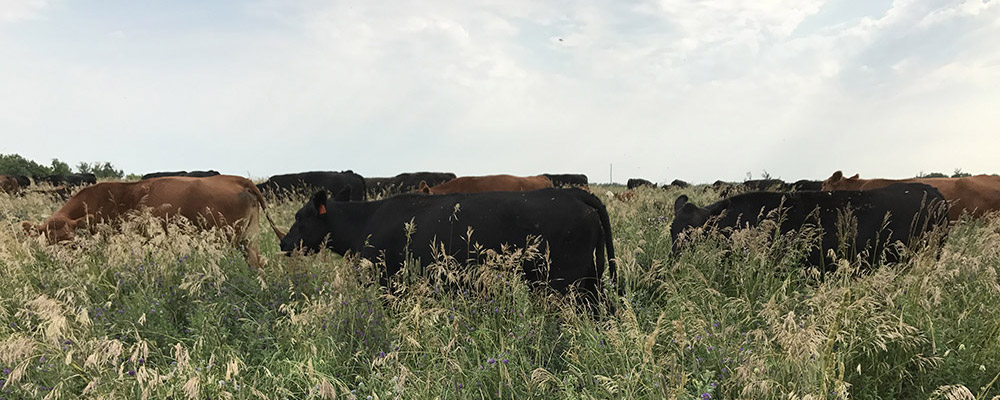
Advantages of forage mixtures (two or more species) can include:
- increased forage production and quality;
- more efficient use of soil nutrients and moisture;
- broader range of adaptation to the soil and climatic conditions found within one field;
- less prone to infestation by invasive plant species;
- less susceptible to insect and disease attacks;
- improved ground cover to help suppress weeds or decrease erosion risk;
- enhanced forage quality
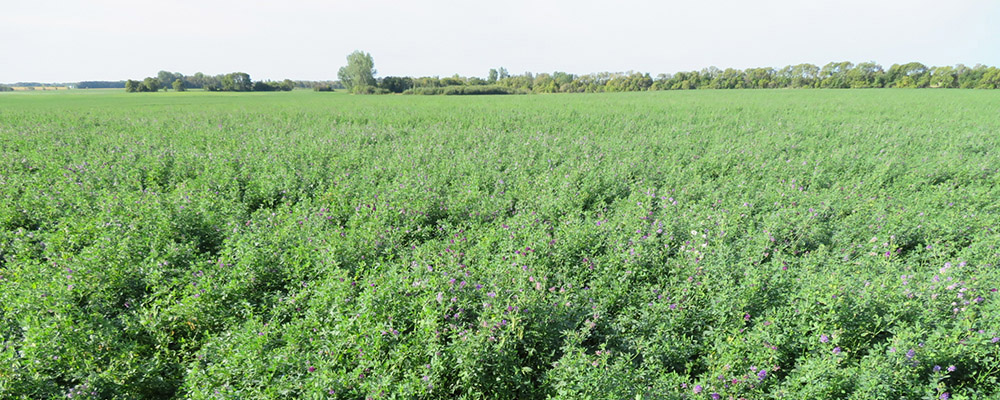
Advantages of monocultures (one species) can include:
- easier to seed, establish, and manage for use;
- uniform growth and maturity;
- more chemical weed control options;
- uniform palatability and reduced risk of grazing selectivity;
- uniform regrowth characteristics;
- stable plant composition; and
- easier to optimize quality and yield.
The forage species that grow well at a given area in a field will depend largely on the physical and chemical soil properties. The more variable the soils are, the more potential benefit may be derived by using species with differing characteristics and tolerances. As a general rule, regions with higher precipitation have the ability to support more diverse forage mixtures. The exception is in situations with extreme site conditions. Regardless of the region multiple species are often seeded in hopes of at least some plants establishing where they are suited (e.g. saline areas).
The effect of species mix on yield and longevity also depends on intended use. Forage mixtures for hay production will differ from those used primarily for pasture. Intended use tends to change with the age of the stand and climatic conditions. As mixed hay stands age, the proportion of legumes declines, and after several years producers often switch their use from hay to pasture. A mixture might be chosen where year-to-year use can vary depending on the weather conditions and the need for hay or pasture. Other sites may be hayed and grazed in the same year. In any instance, legume longevity can be extended by allowing for adequate regrowth prior to winter and through periodic application of appropriate fertilizers.
In mixtures that are seeded for pasture, using species with similar ideal time of use is important. It is desirable to seed multiple pasture blends in different fields to address different grazing needs throughout the season instead of seeding one diverse seed mixture in all fields. For example, early season pastures in deferred grazing systems require early growing species. Summer pastures require species that mature later in the season. Pastures that are used for late season grazing require species that maintain quality well into the fall.
The mixture of species in a blend for pasture can influence selective grazing. Selective grazing can cause shifts in the percent of species in a mix over time. This often depends on the relative maturity of the species within the mix and how grazing is managed. Since plant maturity is a key factor influencing forage quality and palatability, large differences in maturity between forage species can increase the chances of selective grazing. A short-term intensive grazing system may be required to prevent selectivity.
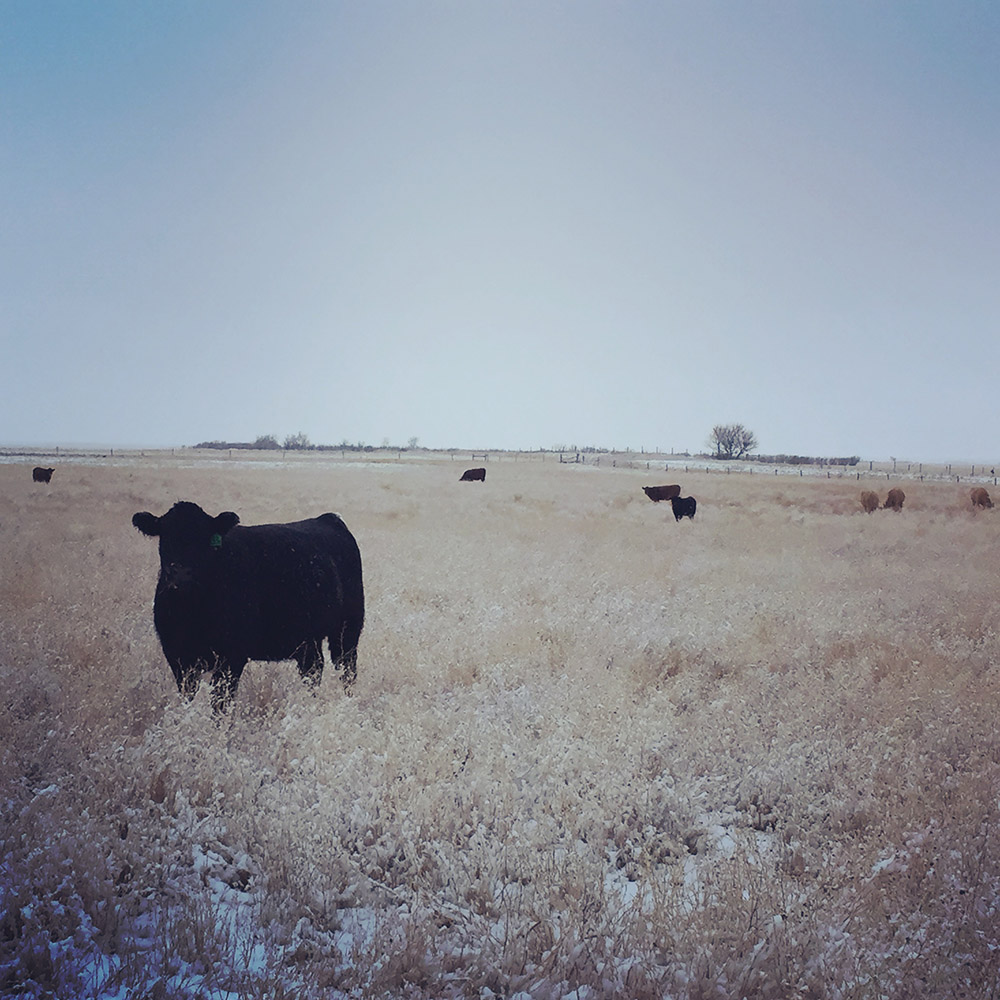
Regrowth characteristics between species in a blend can also influence shifts in species composition over time. Some species grow slowly and respond best to infrequent grazing followed by long rest periods. Other species grow rapidly and work well in grazing systems with short rest periods. A mix with rapid regrowth species and slower regrowth species will favor the fast-growing forage species over time under intensive, frequent grazing.
Choosing the right blend for your operation can be difficult. There is still much to learn about the various interactions between grass and legume species. The reality is that there is no perfect cookie-cutter blend, but there could be a blend right for you. Here are a few questions to consider to help you choose a mixture for your operation:
- How is the stand going to be used (hay or pasture or both)?
- How variable/extreme is the landscape (and soils) into which you are seeding?
- Is the blend adapted for the intended use and for the particular landscape in which it will be planted?
- Do the blended species have similar growth patterns and compatible maturity and palatability characteristics?
- Is the longevity of the species in the blend compatible? If not, does inclusion of short-lived species serve your intended purpose?
- Do the species in the blend match your intended management (i.e., haying frequency, grazing strategies, fertility program) for the site?
For additional information on Stand Mixtures visit the BCRC Forage & Grasslands section.
Seeding rates
Achieving a satisfactory forage stand requires many considerations, including the right seeding rate.
Germination and purity are important factors when determining a seeding rate. Percent germination indicates the percentage of the seed that will sprout under good growing conditions. Percent purity is the percentage of the desired species in relation to the total quantity, including other species, weed seed, and foreign matter. Pure live seed (PLS) is simply germination multiplied by purity. Using seed lots with higher germination and higher purity mean less pounds/acre will need to be seeded to achieve the same plant density than if the seed lot had lower germination or purity.
Since there can be a very large variation in the number of seeds per pound, seed cannot be blended on a percent by weight basis as doing so can lead to a disproportionate amount of one plant species over another. Forage U-Pick uses average seed per pound (and per kg) formulas to accurately calculate mixes.
For example: Sainfoin contains about 30,000 seeds per pound, while timothy has about 1,230,000 seeds per pound. A 50:50 sainfoin:timothy blend requires only 0.025 pounds of timothy seed for every pound of sainfoin in order to have an equal number of seeds in the blend. But, if you blended these by weight (i.e. a pound or each) you would have 30,000 sainfoin seeds and 123,000,000 timothy seeds in your mix, resulting in 41 times more timothy than required for a stand you had hoped to contain half sainfoin and half timothy.
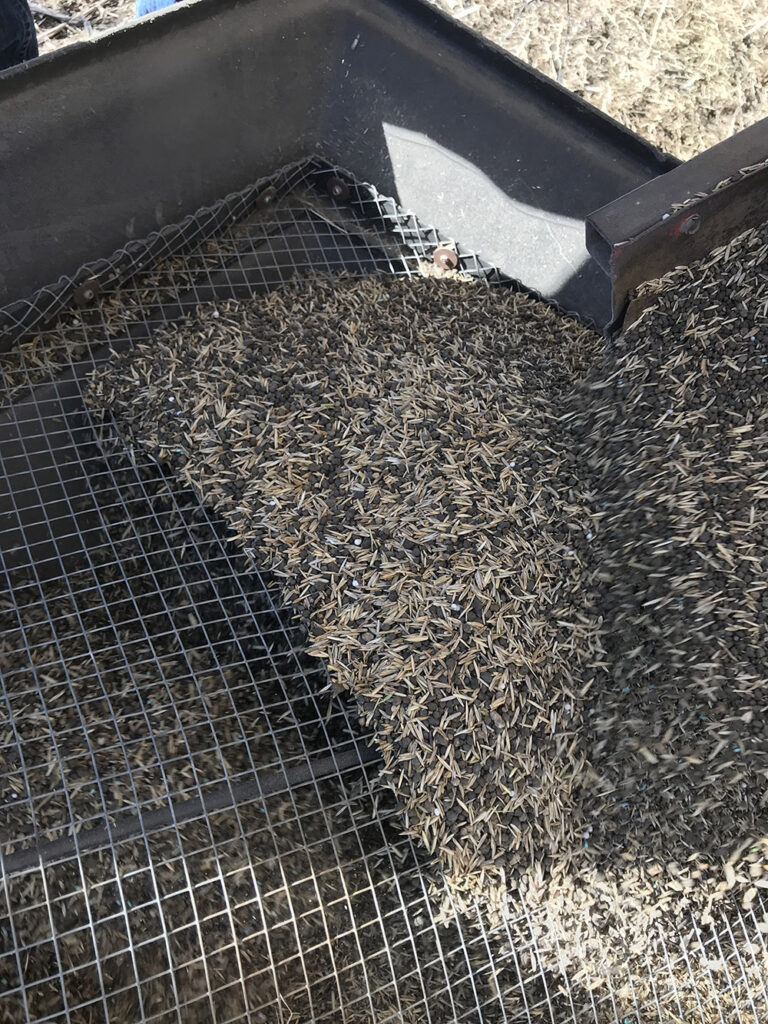
There are a number of scenarios where increasing a seeding rate is good practice. The Forage U-Pick calculator ensures the soil zone you are in is considered. Generally, in areas of higher precipitation more plants per square foot are seeded to match the greater moisture availability. Forage U-Pick has provided guidance for scenarios when an increased seeding rate will help to set the stage for a successful forage stand.
Consider increasing seeding rate when:
- seed is coated (there are less seeds/pound in a pound of coated seeds)
- performing reclamation (site is often extremely challenging)
- it is a challenging site/field (for example: rocky soil, poor organic matter, high salinity)
- broadcast seeding
- fall dormant seeding
- very small seed size (mortality can be high from germination to root establishment)
It is important to ensure that seed has been blended to produce the right proportion of plant species in the field prior to purchase. Most commonly, a two species mixture of grass and alfalfa seeks to establish a 50:50 grass/legume stand. Higher proportions of alfalfa increase the risk of bloat if the stand is going to be used for grazing.
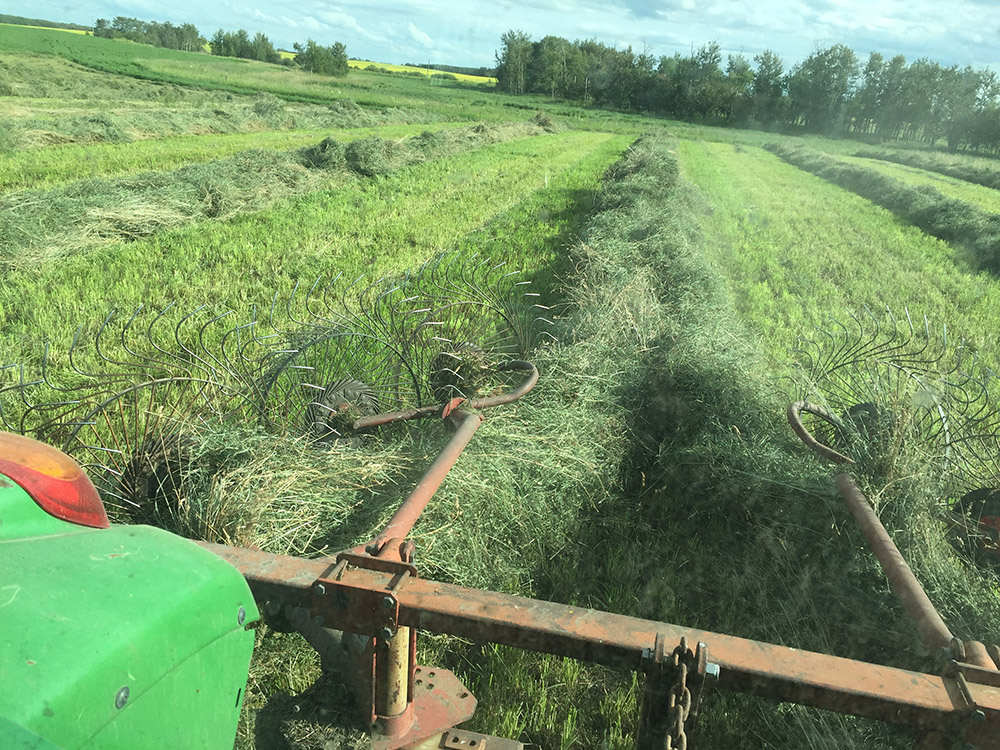
Forage establishment
For information on achieving successful Forage Establishment visit the BCRC Forage & Grasslands section. Provincial information can also be found within the BCRC section.